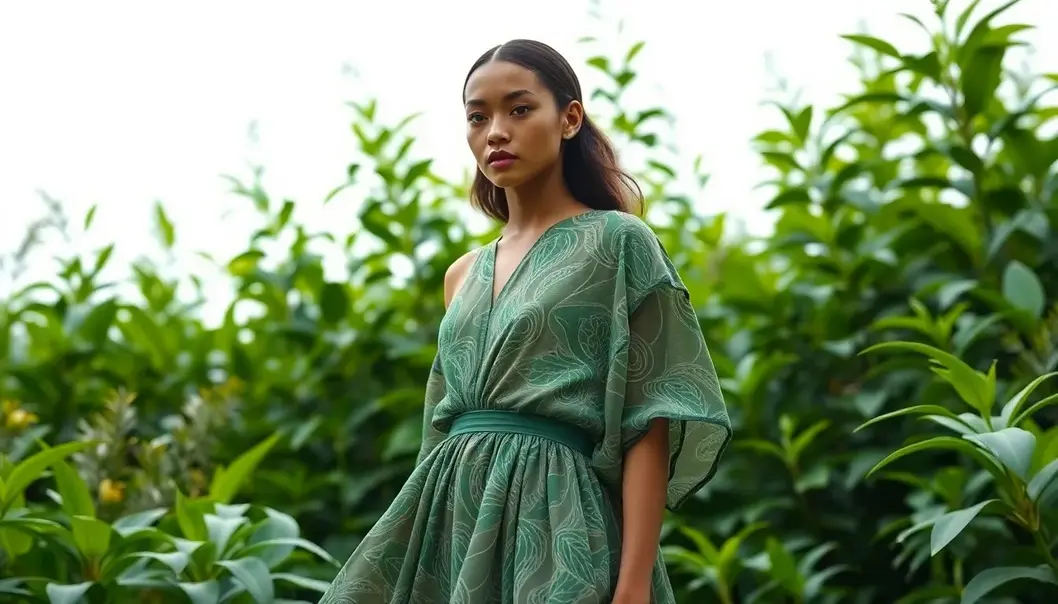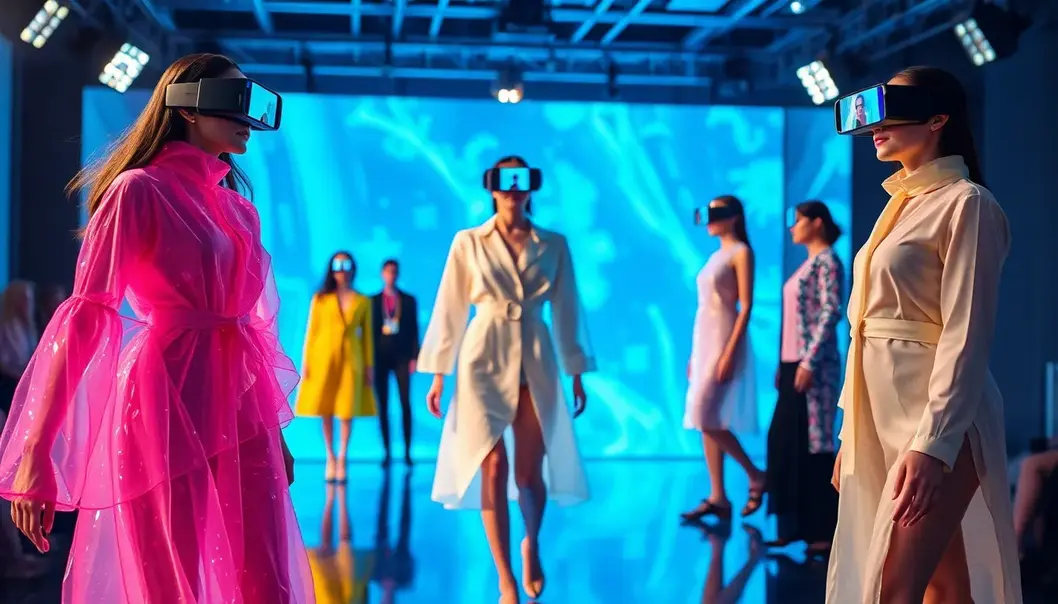Fashion in 2025 is shaping up to blur the lines of tradition and innovation, with novel patterns emerging from diverse cultural tapestries. As we step into this new era, sustainability and technology stand as the vanguard, heralding unprecedented designs that are as futuristic as they are eco-conscious. This exploration invites fashion enthusiasts and trend analysts to peer into the kaleidoscope of the near future, where sartorial elegance meets ethical purpose. Prepare to uncover how digital creativity, sustainable practices, and cultural narratives intertwine to craft the fashion stories of tomorrow.
Sustainable Fabrics and Eco-conscious Designs

As the fashion world strides into 2025, it carries with it a renewed commitment to sustainability and eco-conscious creation. Designers are increasingly driven by the imperative to reduce their environmental footprint. This shift goes beyond aesthetic appeal; it integrates environmental responsibility into the very fabric of fashion. Trace the journey of biodegradable materials, crafted not only to serve fleeting trends but to return gracefully to the earth.
At the forefront are innovative textiles like bio-fabricated leather and plant-based fibers, which promise both durability and biodegradability. Fashion houses are actively exploring the potential of algae-based yarns and lab-grown materials that mimic the texture of traditional fabrics without the environmental cost. These materials represent a confluence of tradition and technology, where the ancient art of weaving meets groundbreaking scientific research.
The production process itself is undergoing significant transformation, with zero-waste techniques taking center stage. Pattern-making is now executed with precision, minimizing fabric offcuts and waste. Renowned designers advocate for methods that not only cut emissions but leverage every scrap of textile, turning remnants into accessories or entirely new pieces. This not only conserves resources but also challenges the throwaway culture pervasive in fashion over the decades.
The philosophy of upcycling breathes new life into garments, recasting old and worn items into contemporary couture. Thrifting, once seen merely as a budget-friendly shopping option, has become a pillar of conscientious consumerism. Vintage treasures are rediscovered and reimagined, bringing individuality and sustainability to personal style. As consumers grow more selective, they demand that the story behind a garment matches their values, provoking a cultural shift toward meaningful consumption.
Luxury is being redefined not just by exclusivity but by the integrity of craftsmanship and the ethics of production. High-end fashion brands are launching eco-conscious collections that prove opulence and environmental sensitivity can coexist impeccably. This evolution in fashion is restoring the splendor of hand-made goods, crafted with materials chosen as much for their ecological footprint as their luster.
Designers and brands championing this green transformation are reshaping consumer behavior. Shoppers are experiencing a new sense of esteem in owning articles that cherish earth-friendly innovation. The movement empowers fashion enthusiasts to choose sustainability without sacrificing elegance, highlighting an emerging paradigm where eco-consciousness is intrinsic to sartorial elegance. As the fashion industry and its audience align more closely with environmental ideals, these practices promise a stylish future harmonious with the planet.
Digital Fashion: The Virtual Wardrobe Revolution

In 2025, digital fashion strides beyond being a mere technological curiosity, establishing itself as a new frontier in the fashion world. As augmented reality and digital garments gain traction, brands are crafting immersive experiences that captivate and engage users in unprecedented ways. Virtual reality fashion shows provide audiences worldwide with front-row seats to haute couture showcases, breaking geographical barriers and fostering a global sense of community.
These developments in digital fashion offer transformative implications for identity and self-expression. Digital clothing allows individuals to experiment with style iterations that reality cannot permit due to practical, financial, or environmental constraints. This virtual shift empowers people to construct identities that are dynamic and fluid, expressing alternate personas without the need for physical garments. As individuals curate their virtual wardrobes, they engage in a cultural dialogue where style becomes both personal play and shared expression.
Moreover, digital clothing is democratizing haute couture by making it accessible to a broader audience. Exclusive designs, once reserved for the affluent elite, can now be experienced and appreciated by anyone with a digital device. This shift challenges traditional notions of luxury and exclusivity, inviting a wider spectrum of fashion enthusiasts to partake in what was once an exclusive domain.
Platforms enabling users to create and dress digital avatars have emerged as pivotal in redefining retail dynamics. Users can customize digital identities with clothing that reflects their tastes, creating a personalized fashion journey. Traditional retail structures, which rely heavily on physical product turnover, are re-evaluating strategies to incorporate these digital interactions. The potential for reduced physical inventory and associated costs represents a seismic shift in business models, pushing brands towards innovative digital offerings.
Cultural shifts accompany these technological advancements as fashion consumers embrace digital collections. These virtual garments offer a canvas for creativity and innovation, altering not only how style is consumed but also how it is interpreted and appreciated. Fashion enthusiasts are gravitating towards platforms that allow them to engage with fashion through interactive and personalized experiences, fostering a sense of ownership and creative agency.
As digital and physical realms continue to converge, the present-day notions of style and fashion undergo redefinition. This era champions fluidity, creativity, and accessibility, inviting the world to a virtual wardrobe revolution that dismantles traditional fashion boundaries and unlocks new dimensions of self-expression.
Final words
Fashion in 2025 represents a tapestry woven from sustainability, digital innovation, and cultural inclusivity. The years leading up to this hallmark year will set the course for how ethical production and virtual experiences redefine the sartorial landscape. As fashion lovers and trend analysts, embracing these changes not only enriches the aesthetic vocabulary but also deepens our commitment to a sustainable future. The journey of style evolution continues, inviting all to partake in the creation of a mindful fashion era.
Stay ahead of fashion trends by subscribing to our newsletter. Get updates on the latest in sustainable and digital fashion.
Learn more: https://fashionfuture.com/subscribe
About us
Fashion Future Magazine offers deep insights into upcoming trends, with exclusive features on sustainable practices and digital innovation in the fashion industry.

